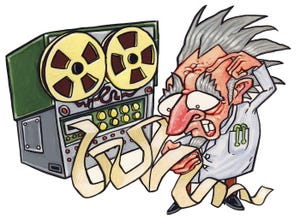The iPod Is The New Desktop
As editor of the Desktop Pipeline, I think a lot about -- naturally -- the desktop. And what do I think? That the desktop is splintering.

As editor of the Desktop Pipeline, I think a lot about -- naturally -- the desktop. And what do I think? That the desktop is splintering.
That's not exactly a deep insight. The so-called "desktop PC" is just as likely to be a laptop these days. The Palm, the Pocket PC, and the Blackberry have all grabbed a piece of the action that used to happen exclusively on the desktop. And now, of course, there's the iPod, which is taking its own chunk out of the desktop.
Last week the trend became clear, you read it here first: The iPod is the new desktop, and podcasting is the new word processing. (Faith Popcorn, eat your heart out.)This has been coming for a while. In February TechWeb reported that more than 10 percent of adults in the United States have an iPod or an MP3 player. By April Desktop Pipeline reported that more than 6 million American adults have listened to podcasts, -- 29 percent of that 10 percent who own players.
The marketplace hasn't been slow to notice. Apple released a new version of its iTunes software which let its users subscribe to, download, and listen to podcasts from a directory that lists 3,000 free audio programs. It had more than a million subscribers within two days. A startup company, Blinkx, has launched a service to search podcasts and video blogs on the Internet. And now a researcher is saying the audience for podcasts will reach 60 million in 5 years.
Podcasting reflects a change in the kind of data we work with, and how we work with it, and it will eventually mean a revolution in what we think of as "intellectual property."
PCs were historically all about text -- but that's almost accidental: text was the only kind of data you could get into and out of the earliest PCs. These days interesting things are happening with data. The type of data managed by PCs is changing rapidly. And so is its quality.
Digital cameras, CD-ROM burners, file-sharing networks, and USB devices have all made the PC the tool for managing audio and images. They have had a major impact on its quantity (it's everywhere these days). And on its quality: digital cameras and image-editing software, for example, have cut the price and improved the quality of the still pictures the average person takes.
And handheld devices like the iPod Photo and the Mustek PVR-A1 are becoming the desktop of choice for displaying your photos.
(By comparison, while the quantity of text data continues to go up -- just look at your e-mail -- its quality has plateaued, or even declined. Certainly spam has lowered the value of e-mail, and instant messaging has changed the nature of text on the screen as well.)
Podcasting will bring the shareability of still pictures to the realm of sound and video. Audio still has the same sorts of quality problems that text does. The major reason for the popularity of music piracy, I suspect, is the lack of alternative sources of audio of acceptable quality. That problem will begin to fix itself. The digital audio player will become a digital audio recorder -- another splinter of the desktop -- as well, and the quality of podcasted public-domain audio and video will rise along with the popularity of podcasting.
About the Author
You May Also Like




